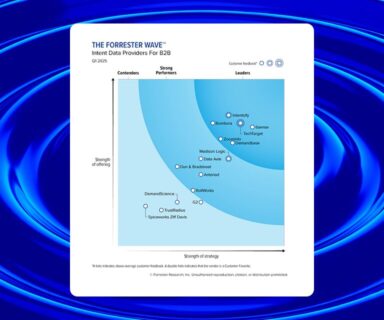 As marketers, we talk a lot about content distribution and promotion – two very important elements of content marketing. However, it all starts with the content itself, and without quality content, your strategy will continuously fall flat.
As marketers, we talk a lot about content distribution and promotion – two very important elements of content marketing. However, it all starts with the content itself, and without quality content, your strategy will continuously fall flat.
With so much new content being created every day – especially in the technology space – your content must stand out amongst the noise. Because of this, having a content creation plan is crucial in order to achieve success. Here are my top five tips for B2B content creation:
#1 – Audit your content
Before creating new content, take the time to audit your existing content library. There are many different ways to execute a content audit, but the end goal is the same: gain a complete understanding of your current content, from format, length and calls to action to buy-cycle stage, which persona it’s targeting and performance metrics.
With an audit in your arsenal, it’s much easier to identify gaps in your content portfolio and pinpoint where to focus resources for new B2B content creation. Also, once you’ve completed an audit, treat it as a living, breathing document, by continuously adding to it as your create additional content, saving you the trouble of doing the same exercise in the future.
#2 – Be goal-oriented
As mentioned above, there is a ton of competition in the technology space when it comes to content marketing. As a result, creating content without defining your goals can lead to wasted resources and poor results. Of course your overall content marketing strategy should support a specific business goal, but additionally, each piece of content should be created with an explicit goal in mind. For example, consider the following goals you may create content to achieve:
- Lead generation: Content to be used for lead generation should map back to the buy cycle stages with the ultimate goal of getting on a researcher’s short list.
- Thought leadership: On the flip side, content created for thought-leadership purposes is more focused on solidifying your business and leaders at your company as experts and authorities in the industry. This content may not convert a lead, but it helps to build a strong reputation and brand presence.
- Customer loyalty: Creating content for current customers should take on a different form. While some should focus on upselling, other customer loyalty content should work to build trust, ask for feedback and show your customers you are listening.
#3 – Know your audience
Knowing your audience is a huge factor in whether or not a content piece is successful. First, you must understand the pain points your audience is experiencing that lead to a technology purchase and create content that caters to those issues.
To get on an account’s short list and actually influence purchase decisions, you must create content that is helpful above anything else. Be it by educating the audience about the market, helping researchers understand how your products can help solve their issues or providing examples of success stories – your content should be useful to your audience in some way.
Additionally, it’s necessary to understand audience content consumption trends, to create content that is catered to audience preferences in terms of how they actually prefer to consume content and when they do so throughout the buy cycle.
#4 – Provide next steps
In marketing, content is created with the intent to evoke some sort of response or action (remember those goals we talked about earlier?). However, much of the content produced doesn’t provide users with the next step until the end of the content piece, or worse, at all. But not only do calls to action need to be included throughout a content piece, CTAs must be compelling. In many technology whitepapers I’ve seen, the CTA is at the very bottom of the last page, and the only option is to call a sales representative for more information.
But what if a buyer isn’t ready to talk to sales? Buyers consume highest volume of content in the early stages of the buy cycle, when they are educating themselves about the market and researching their pain points. At that point in the sales cycle, most IT buyers aren’t ready to pick up the phone.
In addition to providing details for researchers to get in touch with sales, direct users to additional relevant content for a “point of consumption” nurturing approach – allowing users to move themselves through the buy cycle.
#5 – Measure results
Measuring results is a tremendously important aspect of content marketing that often gets glanced over. Without proper benchmarks and measurements, it’s impossible to understand what type of content produces results and what doesn’t. There are many different metrics you can measure, but what you should track goes back to the goals previously set. Consider the following KPIs that are often used in content marketing:
- Marketing Qualified Leads: If your goal is to drive qualified leads, one KPI to measure is MQL conversion. MQLs are more likely to become a customer compared to other leads based on activity intelligence – meaning the actions the lead and/or account has taken on and off your website.
- Traffic and clicks: If brand awareness is your goal, tracking the number of unique page views and clicks on a site or content piece can indicate content value.
- Social shares: Though social shares are mostly considered a vanity metric, seeing which content your audience is sharing and where they are sharing it can give insight into content performance and on what network your content best resonates.
We want to hear from you! What B2B content creation tips do you have? Leave a comment below to share your experiences.
B2B content creation image via 32nd Street Media



